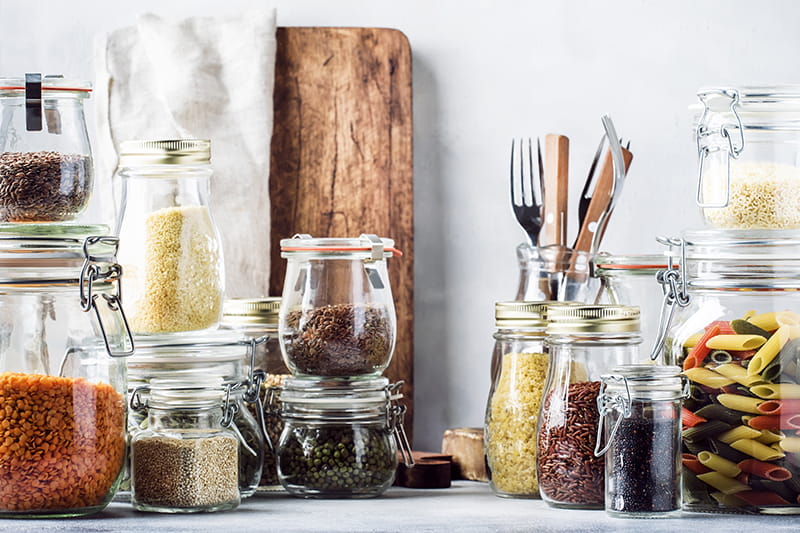Tips for Cooking, Eating and Shopping for Food Right Now

- Drexel Public Health Researchers Lead $3.7 Million Study Looking at Impact of Federal Housing Assistance on Health Care for Chronic Conditions
- Drexel Researchers Gain New Insights from Malaria-Causing Parasite That May Support Development of Future Antimalarial Drugs
- Autism Researchers Explore Role of Environmental Influences on Autism as Part of Multi-Million Dollar NIH Effort
- Researchers Develop Effective Predictor of Severe COVID-19

Please visit the ‘Drexel’s Response to Coronavirus’ website for the latest public health advisories.
How good are you at culinary improvisation? It’s a key skill to have, especially when restaurants are closed or operating solely through take-out, and you’ve learned by now that you have to cook with what you have, or can find, for all the meals you’re eating at home.
Jonathan Deutsch, PhD, professor in the Department of Food and Hospitality Management in the College of Nursing and Health Professions, can help you can feel more comfortable with adapting your culinary habits and skills — or creating new ones. After all, he’s literally written the book on that subject (it’s called “Culinary Improvisation”). And that’s exactly why DrexelNow asked him for some tips on how to be more flexible and creative with sourcing and cooking food.
“If there’s a silver lining to this new reality, it’s that more people than ever seem to be trying new things in the kitchen,” said Deutsch. “It can be rewarding but we’ve also been busy helping people whose typical idea of cooking is to pick up the phone and order what they want.”
Whether you’re a confident home chef or are relatively new to cooking for yourself, consider Deutsch’s below tips when you’re hungry for new:
1. Consider balancing cooking and takeout
Our restaurant industry friends need our support more than ever, but it can also be pricey and not always the most nutritious (depending on your choices) to take out for every meal. Consider an alternating schedule to make your takeout meals a recurring but special treat. Many restaurants are also offering more affordable family dinners such as a large salad, entrée and dessert for four or more people, priced much lower than ordering a three-course dinner for four from the à la carte menu. Some are also increasing their offerings of healthy options, knowing takeout is becoming routine for many.
You can also do a takeout/home-cooking hybrid. A take-out pizza is a great accompaniment to a large homemade salad.
2. Shop with a loose list
As our food supply chain works through labor and supply shortages and along with increased demand for food, going into the supermarket with an exact and detailed list is a recipe for frustration. Rather, go in with some general ideas and adapt your menu accordingly. For example, you may be craving the comfort of a creamy soup during this time, but if a favorite veggie like broccoli isn’t available, you can easily do the same thing with mushrooms, carrots, cauliflower or a host of other options.
3. Use platforms
In a textbook I wrote called “Culinary Improvisation” (Pearson, 2009), we teach students to cook not by following a specific recipe but rather by general platforms that are adaptable to various situations and ingredients. For example, the ratio for a classic French vinaigrette is three parts oil to one part vinegar, plus the addition of other ingredients like garlic, mustard, salt and black pepper. Once you understand the ratio, there is no end to the variations you can try based on what you have on hand. It’s a low-stakes opportunity to be creative in the kitchen.
4. Cook slow
Staying at home can present new and fun opportunities for weeknight dinners. Many time-intensive dishes don’t require much active cooking. For example, simmering soup or stew, proofing dough or baking beans can be done in the background with occasional check-ins. It’s a great time to try something you’ve always wanted to make but haven’t had time to try to make from scratch — like croissants, sourdough bread, baked beans or yogurt.
5. Get on a schedule
Eating, cooking, working and snacking can happen anytime and all–the-time when your day isn’t punctuated by the usual moments like getting kids off to school, meeting a friend for happy hour or a regular commute. Try to give yourself a consistent schedule to keep your work-life balance in check and to keep mealtimes as mealtimes.
6. Balance health and indulgence
At this trying and emotional time, it’s good to indulge a bit. Food is medicine and that extends to mental health as well as physical health. But home cooking does not need to be mainly rich dishes and sweets. Balance those with plant-forward, fresher flavors.
The Drexel Food Lab in the Department of Food and Hospitality Management in the College of Nursing and Health Professions has a long-standing partnership with the non-profit Cook For Your Life. While targeted to cancer patients and survivors, there are a host of recipes we all can enjoy for general healthy home cooking.
Here are a few that are both comforting and healthy that were developed by Drexel students:
7. Think outside the store
Food wholesalers and farmers who typically supply restaurants and bars were hit especially hard by this pandemic. Large families may find great values by buying from suppliers who normally don’t offer wholesale quantities or pricing to the public, but will during this time.
In This Article
Drexel News is produced by
University Marketing and Communications.
